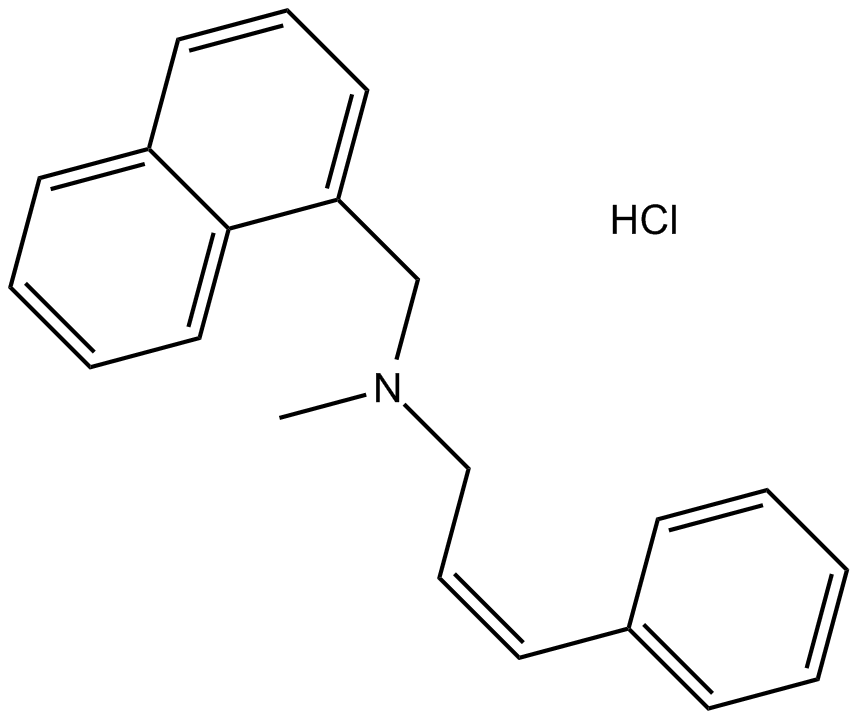Naftifine HCl (Synonyms: AW 105-843) |
| Catalog No.GC11363 |
Naftifine HCl is an antibiotic.
Products are for research use only. Not for human use. We do not sell to patients.

Cas No.: 65473-14-5
Sample solution is provided at 25 µL, 10mM.
Naftifine hydrochloride is a synthetic, broad spectrum, antifungal agent.Target: AntifungalNaftifine exhibits an interesting in vitro spectrum of activity against dermatophytes (38 strains; minimal inhibitory concentration (MIC) range 0.1 to 0.2 mg/mL), aspergilli (6 strains; MIC range, 0.8 to 12.5 mg/mL), Sporothrix schenckii (2 strains; MICs, 0.8 and 1.5 mg/mL), and yeasts of the genus Candida (77 strains; MIC range, 1.5 to greater than 100 mg/mL) [1]. The MIC of naftifine for C. albicans Δ63 is 100 mg/L in Sabouraud medium (initial pH 6.5). Naftifine (50 mg/L) gives greater than 99% inhibition of sterol biosynthesis both in whole cells and in cell extracts of C. albicans. The primary action of naftifine appears to be the blocking of fungal squalene epoxidation [2].Naftifine hydrochloride 2% cream results in clinical cure rate and clinical success rate of 33% and 84% after treatment for 4 weeks, and week 2 efficacy response rates in Naftifine hydrochloride 2% subjects are all lower than at week 4 but are significantly higher than week 2 vehicle-treated counterparts [3]. Naftifine causes interruption of fungal ergosterol synthesis and accumulation of squalene in fungal organisms. Naftifine also has demonstrated anti-inflammatory properties such as a reduction in superoxide production and a reduction in polymorphonuclear leukocyte chemotaxis/endothelial adhesion. Naftifine has shown good efficacy and safety for a variety of conditions and is a useful treatment that provides both antifungal action and relief of inflammatory signs and symptoms. Few adverse events have been noted with naftifine use, the most frequent being mild and transient burning, stinging, or itching in the application area [4].
References:
[1]. Georgopoulos, A., et al., In vitro activity of naftifine, a new antifungal agent. Antimicrob Agents Chemother, 1981. 19(3): p. 386-9.
[2]. Ryder, N.S., G. Seidl, and P.F. Troke, Effect of the antimycotic drug naftifine on growth of and sterol biosynthesis in Candida albicans. Antimicrob Agents Chemother, 1984. 25(4): p. 483-7.
[3]. Parish, L.C., et al., A double-blind, randomized, vehicle-controlled study evaluating the efficacy and safety of naftifine 2% cream in tinea cruris. J Drugs Dermatol, 2011. 10(10): p. 1142-7.
[4]. Gupta, A.K., J.E. Ryder, and E.A. Cooper, Naftifine: a review. J Cutan Med Surg, 2008. 12(2): p. 51-8.
Average Rating: 5 (Based on Reviews and 25 reference(s) in Google Scholar.)
GLPBIO products are for RESEARCH USE ONLY. Please make sure your review or question is research based.
Required fields are marked with *




















